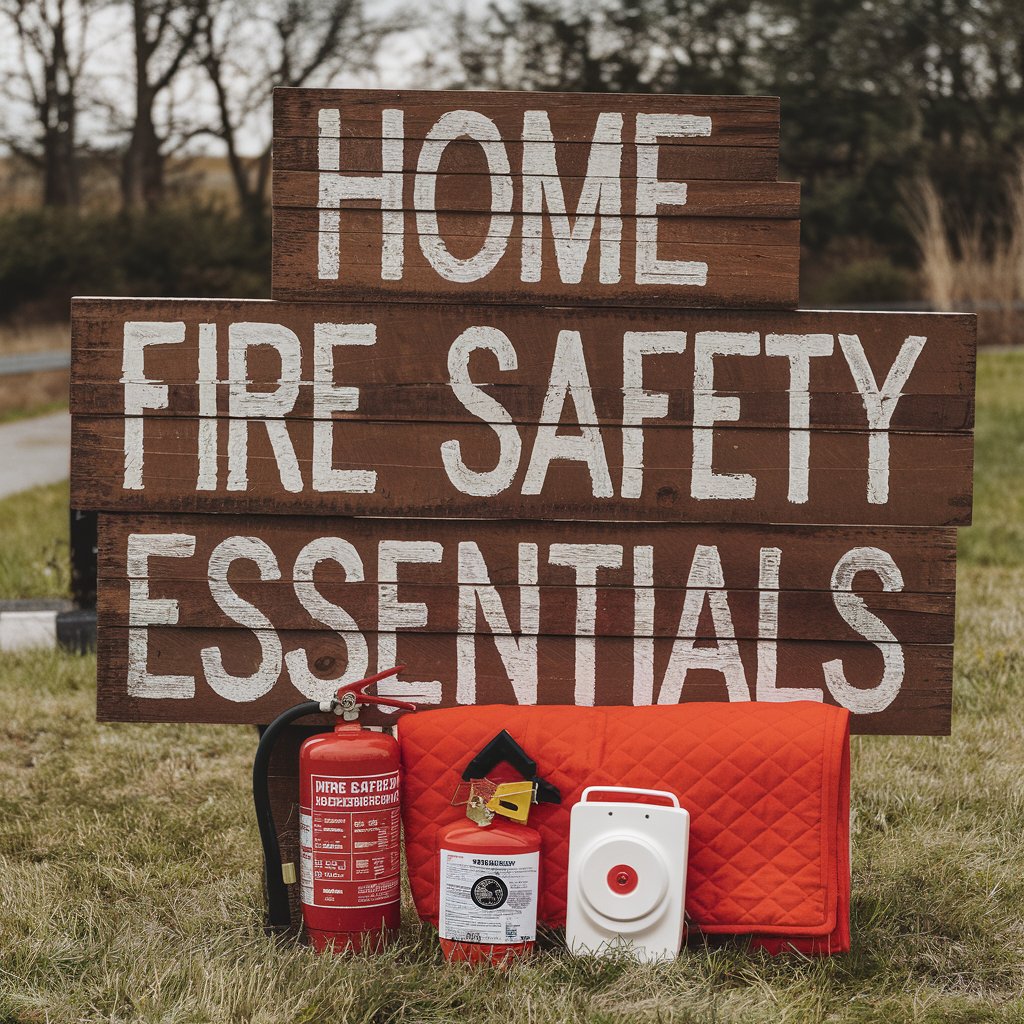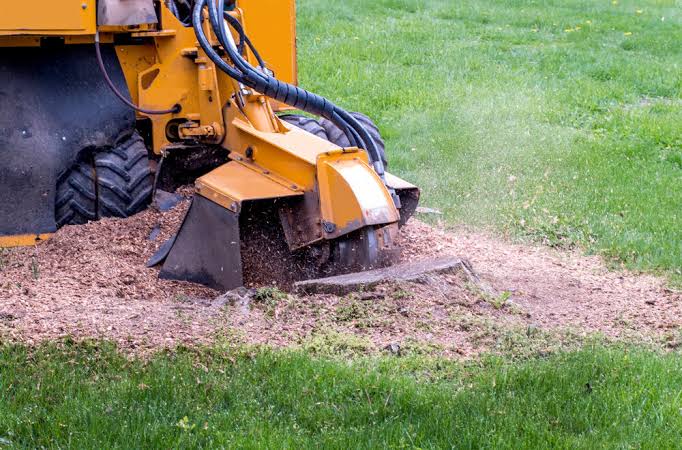Implementing essential fire safety measures in the home can significantly reduce the risk of fire-related injuries and property damage. Some key procedures include installing smoke alarms on every level of the house, creating and practicing a fire escape plan, and maintaining safe habits in the kitchen and around heating equipment.
Although you can install a home fire suppression system yourself, it is often a better solution to have a professional company carry out the work “Our highly skilled design engineers leverage cutting-edge hydraulic calculation software to create bespoke systems tailored to each project’s requirements. Whether it’s a large care home or a single-bedroom bungalow, we guarantee precision and efficiency.” – qsdfire.com
Smoke Alarm Placement Strategies
Proper placement of smoke alarms is essential for early fire detection and maximizing escape time. Install smoke alarms inside every bedroom, outside each sleeping area, and on every level of the home, including basements. Position alarms on ceilings or high on walls, within 12 inches from the ceiling. Place alarms at least 10 feet away from cooking appliances to prevent false alarms. For optimal protection, use interconnected alarms so that when one sounds, they all sound. Consider these additional strategies:
- Install both ionization and photoelectric smoke alarms, or dual-sensor alarms, for comprehensive detection of different fire types.
- Place alarms in hallways leading to bedrooms.
- Avoid installing alarms near windows, doors, or ducts where drafts might interfere with their operation.
- For people with hearing impairments, use alarms with strobe lights and bed shakers.
Fire Escape Route Planning
Creating and practicing a fire escape plan is essential for ensuring family safety during a home fire. Develop a plan that includes two ways out of every room, such as doors and windows, and designate a safe meeting place outside. Key elements of an effective fire escape plan include:
- Draw a floor plan of your home, marking all possible exits and escape routes.
- Ensure windows and doors can be easily opened and are not blocked.
- Choose an outside meeting place a safe distance from the house, such as a neighbor’s home or a streetlight.
- Practice the escape plan at least twice a year, including nighttime drills.
- Teach children how to escape on their own in case adults can’t help.
- In multi-story buildings, identify secondary escape routes like fire escapes or collapsible ladders.
Furthermore, depending on your building’s layout, additional safety measures, such as fire rated roof hatches from surespan (or other fire-resistant roof access solutions from reputable providers), could further support safe evacuation planning.
Remember, once you’re out, stay out. Never re-enter a burning building. Regular practice and clear communication about the plan can significantly increase your family’s chances of safely escaping a home fire.
Safe Use of Space Heaters
Space heaters provide warmth but require careful use to prevent fire hazards. To use space heaters safely:
- Place heaters on flat, non-flammable surfaces at least 3 feet away from combustible materials like curtains, furniture, and bedding.
- Plug heaters directly into wall outlets, not into extension cords or power strips.
- Turn off and unplug heaters when leaving the room or going to sleep.
- Choose models with safety features like tip-over switches and overheat protection.
- Keep children and pets away from space heaters to prevent burns or accidents.
Always follow the manufacturer’s instructions and never leave a space heater unattended. Proper placement, usage, and maintenance of space heaters can reduce fire risks while providing supplemental heat in your home.
Maintenance and Testing of Alarms
Regular maintenance and testing of smoke alarms ensure their effectiveness in detecting fires. Test smoke alarms monthly by pressing the test button, and replace batteries at least twice a year. Clean alarms regularly using a vacuum or soft brush to remove dust and debris. Key maintenance practices include:
- Replace smoke alarms every 10 years, as their sensors degrade over time.
- For hardwired alarms, check that the backup batteries are functioning.
- Conduct sensitivity tests as required by local regulations, typically every 1-2 years.
- Keep detailed records of all tests and maintenance performed on the alarms.
Proper maintenance ensures that alarms will work when needed and helps reduce false alarms, which can lead to complacency.
Fire Suppression System Types
Fire suppression systems are essential components of building safety, designed to detect and extinguish fires quickly. There are several types, each tailored to specific environments and fire hazards:
- Water-Based Systems:
- Wet Pipe Sprinkler Systems: The most common type, containing water under pressure that activates when heat triggers the sprinkler heads.
- Dry Pipe Systems: Used in areas prone to freezing, these systems contain pressurized air or nitrogen that is released before water flows.
- Pre-Action Systems: Combining features of wet and dry systems, often used in areas with sensitive equipment.
- Deluge Systems: Designed for high-hazard areas, all sprinkler heads open simultaneously when activated.
- Chemical Agent Systems:
- Clean Agent Systems: Use gases like FM-200 or Novec 1230 to suppress fires without residue, ideal for data centers.
- Dry Chemical Systems: Use powders like sodium bicarbonate to extinguish fires in industrial settings.
- Foam Suppression Systems: Commonly used in areas with flammable liquids, creating a foam blanket to smother fires.
- Gas-Based Systems:
- CO2 Systems: Effective for Class B and C fires but suitable only for unoccupied areas due to oxygen displacement.
- Inert Gas Systems: Use gases like argon or nitrogen to reduce oxygen levels and suppress fires.
- Special Hazard Systems:
- Kitchen Suppression Systems: For commercial kitchens, using wet chemicals to combat grease fires.
- Vehicle Fire Suppression Systems: Protect vehicles and heavy machinery in industries like mining.
Each type of system has specific applications, depending on the type of fire hazard and potential for water damage. Consult with fire protection professionals to determine the most appropriate system for a specific application.
Additional Fire Safety Measures
Beyond essential fire safety measures, additional steps can further enhance home fire safety:
- Install Carbon Monoxide Detectors: Place detectors on every level of your home and outside sleeping areas.
- Keep Fire Extinguishers Accessible: Have at least one multi-purpose (ABC) fire extinguisher on each floor, especially in the kitchen and garage, and ensure all family members know how to use them.
- Create a Home Fire Safety Checklist: Regularly inspect for hazards like frayed electrical cords, overloaded outlets, and flammable materials near heat sources.
- Fireproof Important Documents: Store vital records in a fireproof safe or consider digital backups stored securely off-site.
- Maintain Proper Landscaping: Clear dry vegetation around your home, especially in wildfire-prone areas.
- Teach Children About Fire Safety: Educate kids about the dangers of fire, how to respond to smoke alarms, and the importance of not playing with matches.
- Consider Fire-Resistant Materials: When renovating, use fire-resistant roofing materials or treatments for existing structures.
- Install Arc Fault Circuit Interrupters (AFCIs): Prevent electrical fires by detecting arc faults in home wiring.
- Develop a Pet Evacuation Plan: Include pets in your escape plan, keeping leashes or carriers near exits for quick evacuation.
- Conduct Regular Dryer Maintenance: Clean lint filters after each use and have the vent professionally cleaned annually to prevent lint buildup.
- Use Flameless Candles: Opt for battery-operated candles to eliminate open flame risks.
- Create an Emergency Kit: Prepare a kit with essentials like first-aid supplies, flashlights, and important contact information for evacuations.
By implementing these additional measures, you can significantly enhance your home’s fire safety and be better prepared for potential emergencies.
Summary of Home Fire Safety Essentials
Home fire safety is crucial for preventing injuries, fatalities, and property damage. Essential fire safety practices include installing smoke alarms, planning fire escape routes, and safe appliance use. Here’s a quick overview:
Key Fire Safety Measures
- Smoke Alarms: Place alarms inside bedrooms, outside each sleeping area, and on every home level. For maximum protection, use interconnected alarms.
- Fire Escape Planning: Create a clear escape route from every room with two ways out, and choose an outdoor meeting spot. Practice fire drills twice yearly.
- Safe Heating Practices: Keep space heaters on stable surfaces, away from combustibles, and unplugged when unattended. Use models with safety features to reduce hazards.
Regular Maintenance and Testing
Smoke alarms should be tested monthly and have batteries replaced twice a year. Cleaning alarms and replacing them every 10 years will ensure reliability.
Additional Safety Measures
Consider installing fire suppression systems based on your environment, such as wet pipe sprinklers or chemical agents for sensitive areas. Other steps include using carbon monoxide detectors, keeping fire extinguishers accessible, and creating a home fire safety checklist. Opting for fire-resistant materials in renovations and teaching children about fire safety are also essential practices.
By integrating these preventive actions, your home can be better protected against fire risks, helping you to act quickly and safely in case of emergencies.






